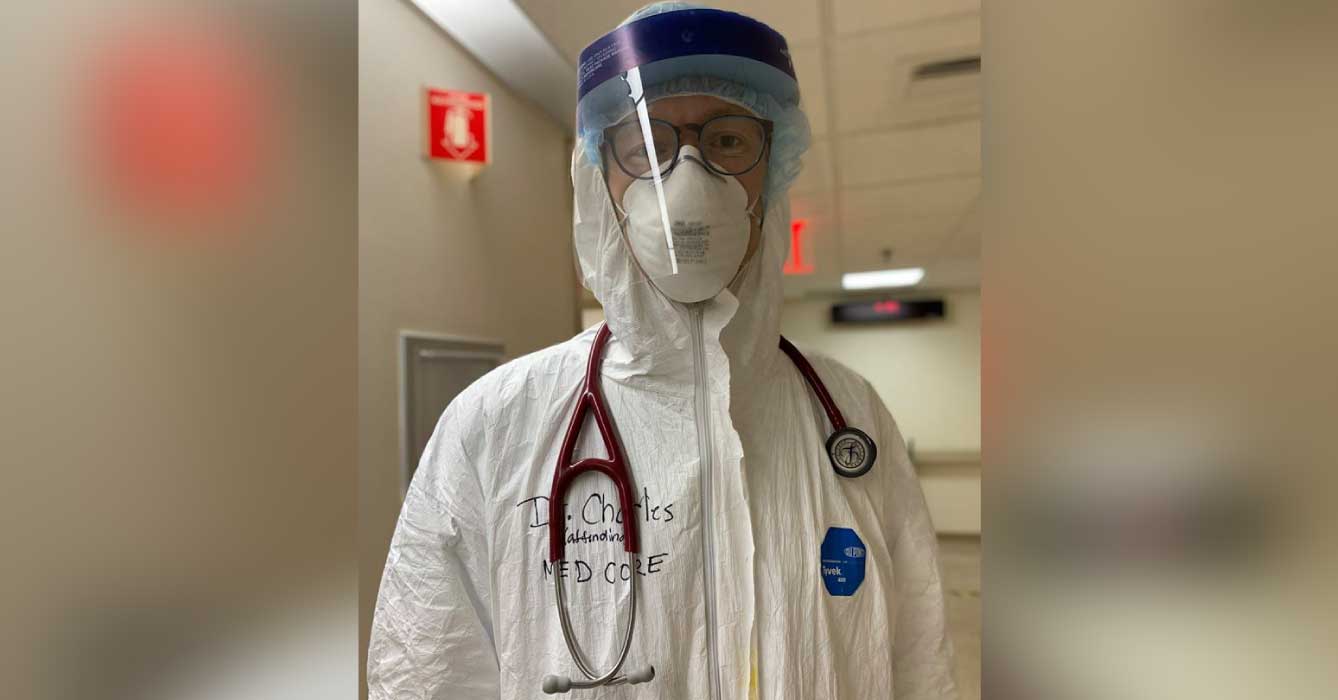
Dr. Jesse Charles in the ER and COVID wards at Brooklyn Hospital Center in New York
Neither is the first-person account a novel chronicle of history. Think of letters sent home from the battlefront and POW camps of America’s Civil War, Anne Frank’s diaries from the Secret Annex in WWII, the intimate exchanges being archived through NPR’s StoryCorps. None replace the role of the compassionate, independent journalist. What they do is add value beyond calculation.
In the time of COVID, those accounts are again too common, but carry the power to break through the numb of the news. They reach out with an undeniable truth and plea: I am here. Please hear me.
When those stories weave that directness with fine writing … well, I have mostly learned to still my twitchy editor fingers and sit back in a wash of heartache and awe.
The healing power of stories
That’s how I felt when I read a Facebook post written by Dr. Jesse Charles, which was later published with permission in the Methow Valley News. Charles lives in the the Methow Valley, a working playground up in the North Cascades of Washington state. He is part of a small medical staff at the little clinic in Winthrop, a Western-themed town that draws tourists during summer hiking/biking and winter skiing/snowshoeing season, and that outdoor lovers year-round.
I met Charles last November. I was at a small cabin in the mountains for Thanksgiving and developed a cough that was so violent and persistent it scared me. That was two months before the first coronavirus news, but I was handed a mask when I walked into the clinic, and Dr. Charles wore one throughout the visit. He quickly read the funky music of my lungs. We traded a few descriptors: Does it wheeze like a bagpipe or whistle like a calliope? I was carrying a book, as always, and he asked what I was reading. Another exchange as he scribbled a note to himself: possible Christmas gifts for this father. Some final scribbles for the pharmacist: a steroid inhaler and some nighttime cough calmer. I was fine by the New Year.
Earlier this spring, I heard that Dr. Charles had taken a leave to volunteer at Brooklyn Hospital Center in New York, where COVID-19 cases were crippling any sense of norm. That earlier connection, slim as it was, likely is what prompted me to scan the top of Charles’ post when it was sent to me. But what kept me reading was the forward pacing and acute detail of story itself, and how all that builds to a message: I am here with them. Please hear them.
Charles states his own discomfort about going public with his “personal reflection,” but doesn’t dwell on the throat-clearing. He says he changed his mind when an ER physician in New York committed suicide under the stress of coronavirus cases. In his permission to the Methow Valley News to use his Facebook post, he simply says this:
We call health care workers heroes, and then put them in impossible positions. These experiences are traumatic, and in her case, the trauma was complete.
Then he does what the best immersive writers do: He turns the lens away from himself, and settles into his story. In this case, a cascade of stories, each its own moment but the accumulation picking up the speed and weight and volume of an avalanche. He doesn’t varnish or buff out his emotions, or his process:
In my time here I hadn’t cried until now, writing these words, remembering this moment.
The moment that stopped me comes late in his essay (and it is an essay, with a launch, a strong story middle, and a message at the end). He has been transferred from the ER to caring for patients on the general medicine floor. Among them were two patients he first encountered in ER. He took to sitting with them when he could, in full gown, glove and mask.
Over the following days we became close. I would sit in head-to-toe PPE, asking them about their lives, their families, their questions. We were advised to minimize patient contact, but that felt like the only true medicine I could provide.
What an awareness and admission of humanity:
Throughout his post, Charles tells stories. But he also honors the healing power — for his patients and for himself — of listening to them. I wouldn’t be surprised if, all the while, he was scribbling in a notebook, taking special note of children’s names, favorite movies and recommended books.
